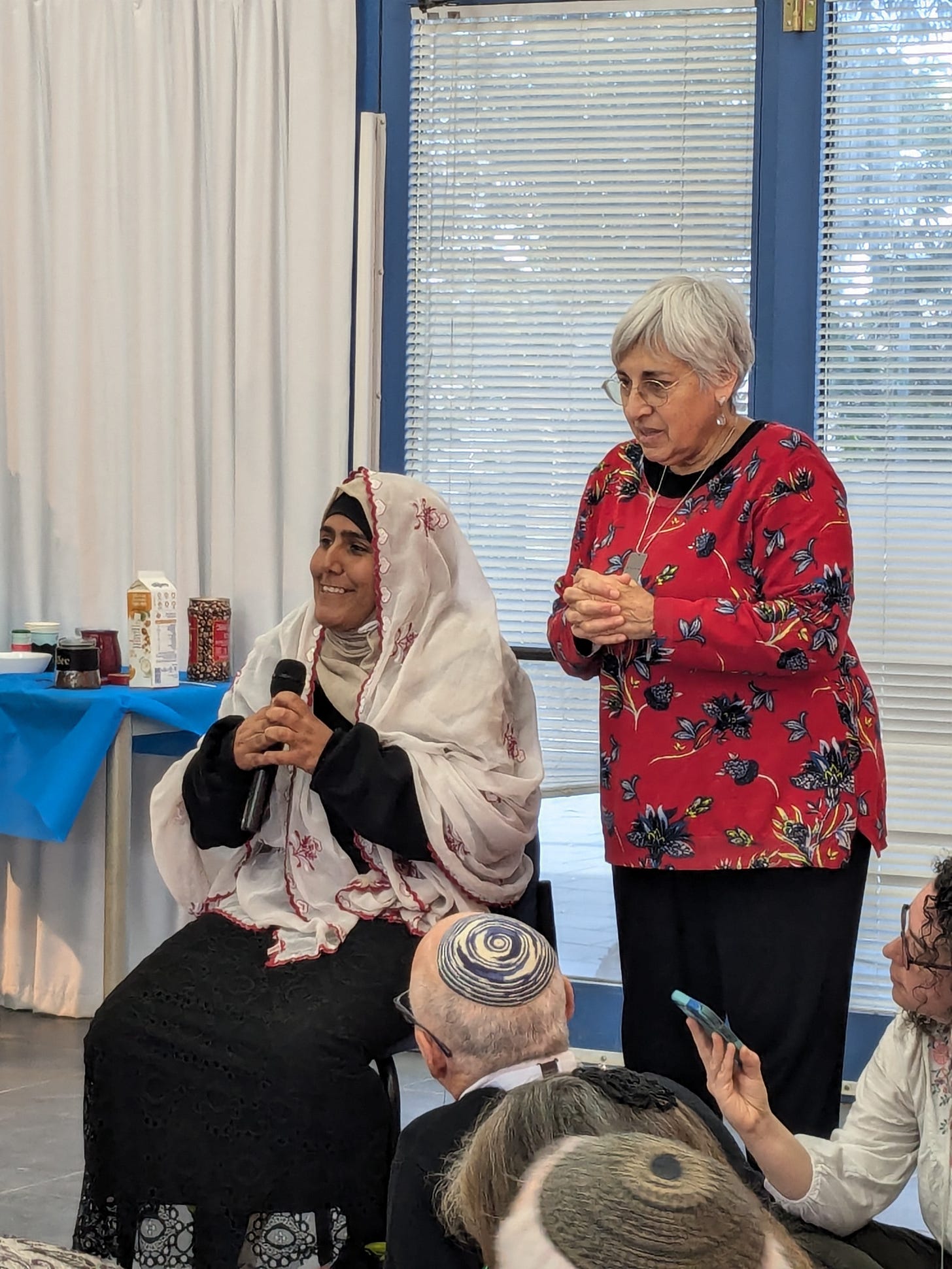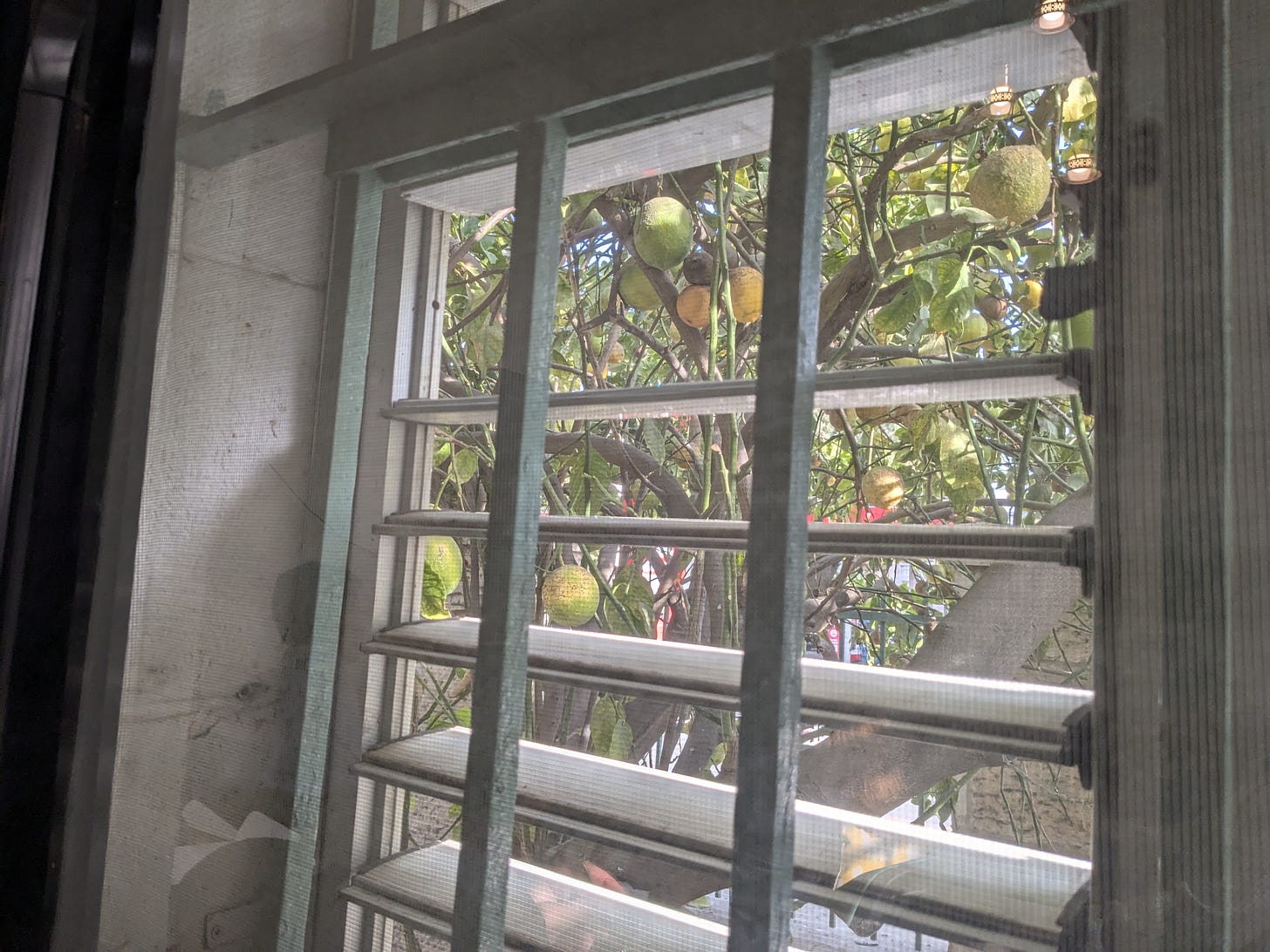Dreams Shape Reality - Vayishlaḥ 5785
Visiting off-the-beaten path places in Israel in search of visions of shared society
I spent virtually all of last week, between Shabbat Vayyetze and Shabbat Vayishlaḥ, in Israel at the convention of the Rabbinical Assembly, the professional organization of Conservative rabbis; there were about 250 of us from around the Jewish world – North America, South America, Europe, and of course Israel.
As many of you also know, I go to Israel a lot; this was in fact my third trip since the Hamas attack of 10/7/2023, and I have lost count of how many round-trip tickets I have purchased since my first visit in 1987, but I am certain that it is well over 50. This trip was short; even though I woke up in Pittsburgh on Sunday at 4:30 AM to get there as quickly as possible, I was on the ground for less than 4 days to return in time for Shabbat.
I always love visiting Israel. I remarked to a colleague as we were boarding a bus on Tuesday morning, and we observed an olive tree in the parking lot outside the bus window, how the landscape of Israel – the trees, the stone, the desert – just makes me feel all gooshy inside. It makes my tears well up in Zionist fervor and my heart burst with yearning. And as much as I love visiting Israel, leaving the land of our matriarchs and patriarchs, the ancestral land of the Jewish people, always makes me sad.
Here is the good news: Israel is functioning. Life seems relatively normal. The restaurants are bustling. The museums, the cultural offerings, the universities, the shopping centers all appear normal. There are traffic jams, of course, but for the first time in many years, I actually did not bother to rent a car, since I was traveling only between the airport, Jerusalem, and Tel Aviv, and I traveled easily by rail. It's fast and convenient and relatively inexpensive - you can get from Jerusalem to Tel Aviv in 36 minutes for a mere 25 sheqel - about $7!
And more good news is that Israel has largely disarmed Hizbullah, and with the fall of the Assad regime in Syria, Iran has lost a major surrogate, significantly changing the balance of power in the region. Also, Israel is now in control of the peak of Mt. Hermon, a strategic move of tremendous importance.
But it is not all good news. After 437 days of war, 437 days of captivity for 100 human beings, posters of whom are still on seemingly every wall and fence, and the ubiquitous stickers and memorials of the murdered and martyred filling public places with quotes and photos and hearts and anguish, the sense of general misery just underneath the surface is still palpable.
While reconnecting with colleagues is an essential part of these rabbinic conventions, a major piece is also professional development. We were given a choice of multiple “tracks” to pursue on Tuesday and Wednesday, and I chose the track on the theme of “shared society” in Israel, an examination of initiatives that help bridge the gaps between Israel’s Christians, Muslims, and Jews. This track brought us to places in Israel that are far, far off the beaten path, places to which I had never been, and that is saying a lot: the long-neglected desert development town of Yeruḥam, the largest Bedouin city in the world, Rahat, the mixed Jewish/Christian/Muslim cities of Lod and Ramleh.
In choosing this track, I had hoped to dive deeper, with the help of our Israeli colleagues, into the ways that Israelis of different religions and cultures seek ways to live together, to build bridges, to listen to each other's stories, to share the holy, ancient ground, and in turn to bring some inspiration back to all of you. It became quickly clear to me that there is much more work to be done. Alas.
In Lod, we heard tales of abused and murdered women, organized crime, and denial of city services to Arab residents. In Beersheva, we heard that Jewish and Arab students at Ben Gurion University of the Negev were having trouble relating to each other in the context of war. In Ramleh (n.b. not Ramallah, in the West Bank), we heard the director of a cultural center which fosters dialogue across ethnic lines admit that the hope he had prior to October 7, 2023 was much diminished.
And there were a few bright spots: in Yeruḥam, the town had succeeded in building a school for Bedouin residents in the adjacent unrecognized village of Raḥma, and we met a Bedouin woman advocating for greater opportunities for people like her.
In Rahat, we were graciously welcomed by the Imam of the grand Al Nor Mosque, Sheikh Jamal Al Ubra, even as he told us that he had lost many, many relatives in Gaza during the war. In Lod, we heard about how the abused women were helped out of bad situations and ushered into new lives.
And I was left with the feeling of Israel not as a shared society, but as a torn country, not only at its borders but also in its heart.
So, even as I lamented the great challenges I saw and heard, I found comfort in two things: first, that the initiatives for dialogue and cooperation were ongoing. They have not ceased, despite the desperation all around. Second, I was inspired by my rabbinic colleagues, who gave us words of ḥizzuq, of strengthening one another in the face of so much dysfunction and failure.
From my Israeli colleague Rabbi Amirit Rosen, who serves a Masorti congregation in Jerusalem, who organized the visit to Yeruḥam, Beersheva and Rahat: Rabbi Rosen spoke of how although religion is often perceived to divide people, it can also unite. She told an anecdote of how that same Imam had eulogized our colleague Rabbi Michael Graetz, who had dedicated his time to interfaith dialogue, and died a few weeks ago. At the funeral, Sheikh Al Ubra referenced the story of Yosef, whom we will encounter next week in Parashat Vayyeshev, found in both the Torah and the Qur'an, about how his brothers in a fit of anger throw him into a pit, and eventually sell him into slavery. But at the end of the story, Yosef and his brothers are reunited, and they all embrace and weep with joy.
And, from my American colleague, Rabbi Jeff Arnowitz, who serves Westchester Jewish Center just north of NYC, who spoke of the difference between Shabbat candles and Ḥanukkah candles: Rabbi Arnowitz cited a passage of the Mishnah that is read on Friday nights in some congregations, often referred to by its opening words, “Bameh madliqin.” The mishnah teaches us what may be used for Shabbat candles and what may not be, and the suggestion, said Rabbi Arnowitz, is that the quality of the light depends on the quality of the oil. He then extended the metaphor to say that the quality of Shabbat, which for those of us who take it seriously can have a dream-like quality, a time apart from reality, depends to some extent on the experiences of the reality which surrounds it. Reality shapes our dreams, and bad realities, said Rabbi Arnowitz, make for bad dreams.
But Ḥanukkah, he went on, goes the opposite way. The message of Ḥanukkah, on which we kindle lights to ward off the darkness, is that the dreams of Ḥanukkah shape our reality. If we dream of a better future on Hanukkah, as we increase the light every night, then our reality will ultimately reflect that dream. So we have to keep dreaming, keep working to bring light in the dark.
In Parashat Vayishlaḥ, from which we read this morning, one of the most striking moments in broken Biblical relationships occurs. As the estranged brothers Ya'aqov and Esav are reunited, Ya'aqov offers half of his possessions for rapprochement. And Esav, a brute of a man who is ruled by his appetites, and from whom we have been taught to expect the worst, replies in a moment that reflects the most sublime aspiration of people. Esav says, יש לי רב אחי / Yesh li rav aḥi. “I have plenty, my brother.” (Bereshit / Genesis 33:9)
These two brothers, twins, who have been struggling with each other from the time that they were in the womb, suddenly have no more need to fight. Each has enough. And it took multiple parshiyyot, many years, and an abundance of struggle to reach that point of satisfaction with what they have. The 16th-century Polish commentary Kli Yakar, by R. Shlomo Ephraim Luntschitz, points out that, notably, it is Esav who is, as with Pirqei Avot 4:1, sameaḥ beḥelqo - happy with his portion.
In the short term, we should all keep praying for a hostage deal and an end to the war. In the long term, we should also pray that we all might find enough on that tiny, crowded land.
And as we prepare ourselves for Ḥanukkah, Ḥag haUrim, the Festival of Lights, I hope that we all keep our dreams bold and focused on peace, and on bringing the hostages home, because that will ultimately bring the light-filled reality which we all so desperately need.
Rabbi Amirit Rosen, in summation of the commitment to, if not the achievement of, an equitable, shared society in Israel, pointed out that we must continue the dialogue, we must continue to hold the values of peace and understanding before us, even if we are not yet there, “even if nobody is listening.” Those are the dreams onto which we must hold fast, so that the reality of a truly shared society in Israel will eventually come.
We are not there yet; we are not even ready. But we can, and we must, dream.








